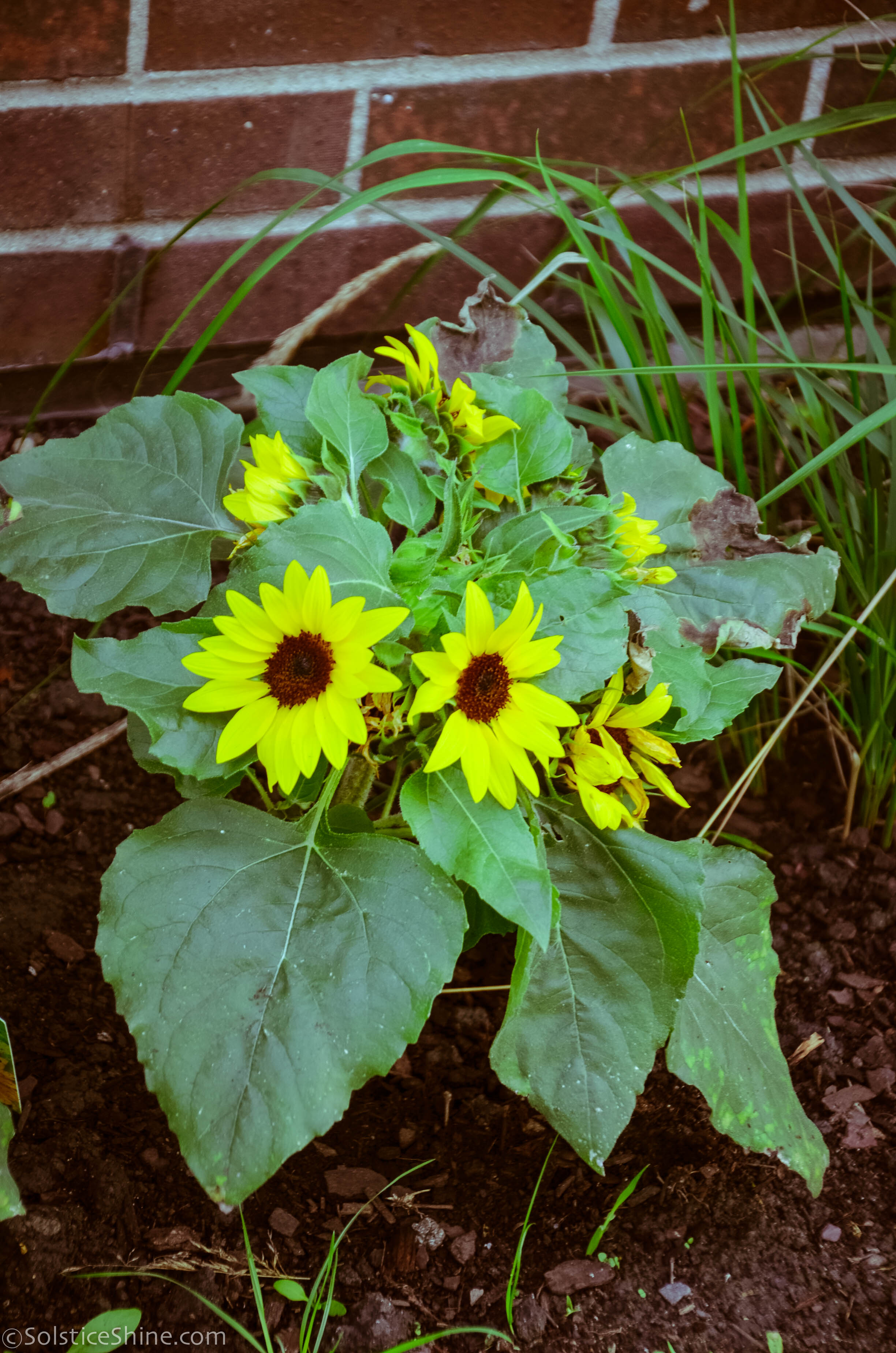Sunflowers grow best in zones 2-11. Sunflowers need to be grown in full sunlight. Space the plant 2-3 feet apart and plant the seed 1-3.5 inches deep. The seeds should be watered frequently until the roots have established. It can be grown in a variety of soils, however the soil needs to be 45ºF or warmer.The pH level of the soil should be between 5.7-8. The soil needs to remain moist for the best growth, but sunflowers are tolerant of dry conditions. Sunflowers can grow 3-10 feet tall and 1.5-3 feet wide. They are in bloom from July to October. Stakes may be needed to support the stem of the sunflower. Scarecrows or nettings can be used to ward off birds or rodents that like feeding on the sunflower seeds. Sunflowers are drought tolerant so xeriscaping would be a good option. Xeriscaping is a way of landscaping by using plants that are native and drought-resistant. This helps to cut down on the usage of water and irrigation (1).
Culinary and Medicinal Uses
Sunflowers were a popular medicinal source for Native Americans. The Dakota used it to treat chest pains and pulmonary problems. The Cherokee drank an infusion of sunflowers to help with kidney troubles. Sunflower roots were used by Paiute to alleviate rheumatism (2). In modern society, sunflower seeds are still eaten raw, roasted, cooked, dried, ground, and used to create oil (1). Sunflower seeds have been used in Russia and Portugal to make bread. The roasted sunflower seeds have been used as a coffee substitute (3). Sunflower oil is used today in America as a facial cleansing oil.
Significance to Cultural Communities
Sunflowers held great significance to the Native Americans. The Hidatsa used sunflower seeds to make cooking oil. The Hopi believed that there would be a large harvest if the number of sunflowers grown were also large. Sunflowers were used in food in Mexico and was known to treat chest pains. The Navajo used it in their sun sand painting ceremonies. Different tribes also used sunflowers to create purple, black and yellow dyes for decoration. The Zuni tribe uses a sunflower poultice to draw venom from snakebites (2). Sunflower oil is used in the production of paints, soaps, and candles.
_______________________
1. “Helianthus annuus (Common sunflower).” (2013). Retrieved October 25, 2013, from Lady Bird Johnson Wildflower Center website: http://www.wildflower.org/plants/result.php?id_plant=HEAN3
2. “Annual Sunflower Helianthus annuus L. Plant Symbol = HEAN3. (2006, June 7).” Retrieved October 26, 2013, from United States Department of Agriculture website: http://plants.usda.gov/plantguide/pdf/cs_hean3.pdf
3. “Helianthus annuus: Common sunflower.” Encyclopedia of Life. http://eol.org/pages/468106/details



